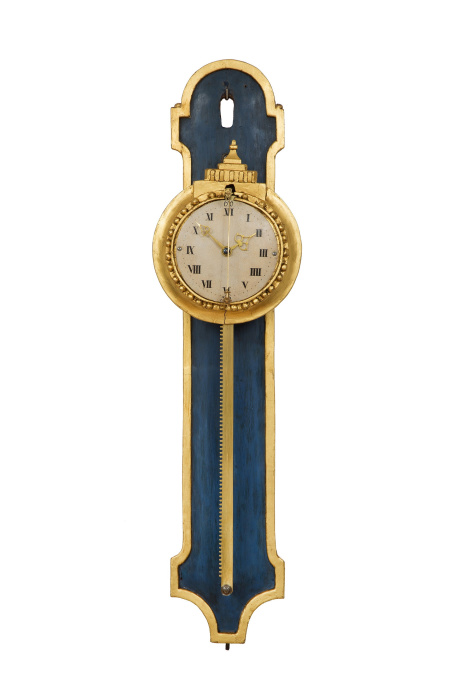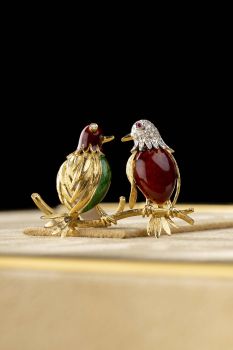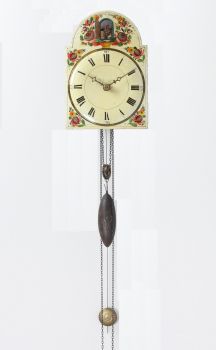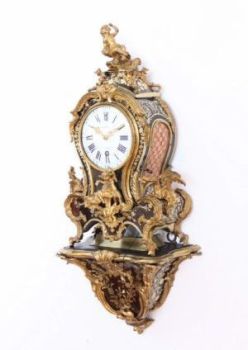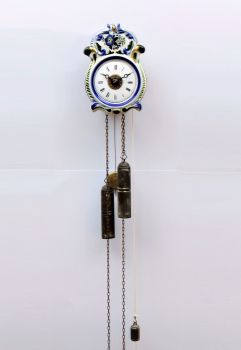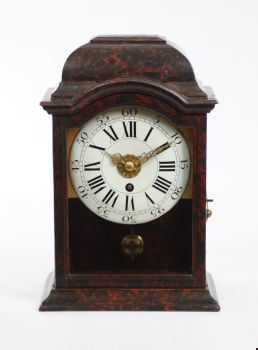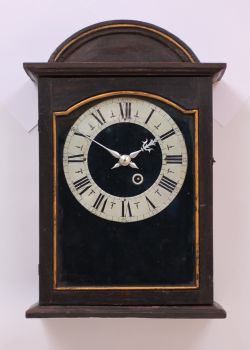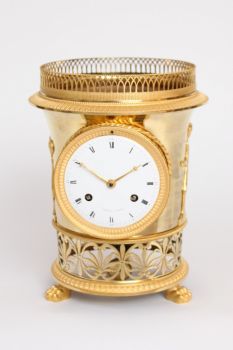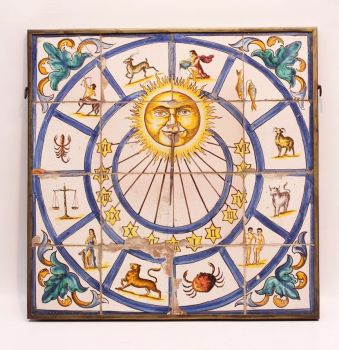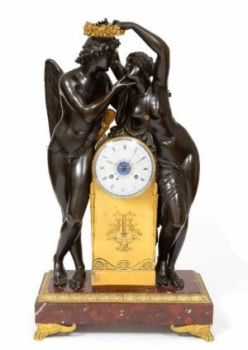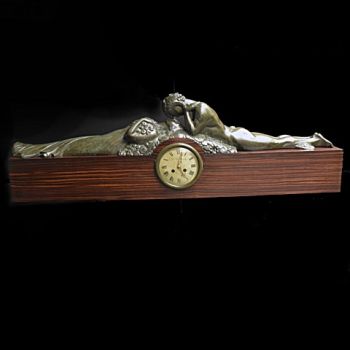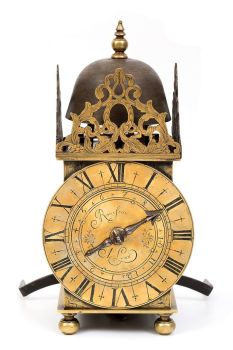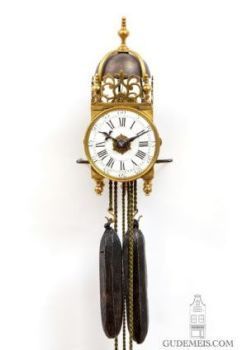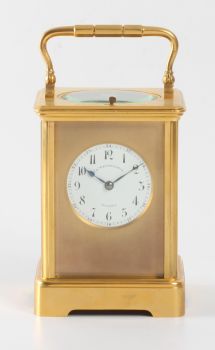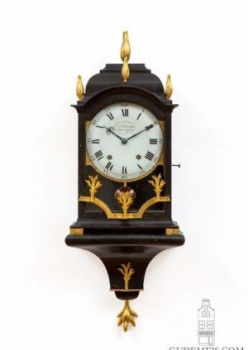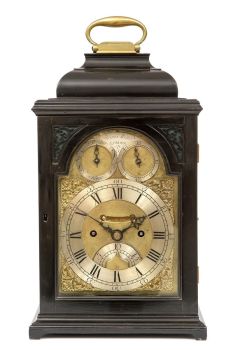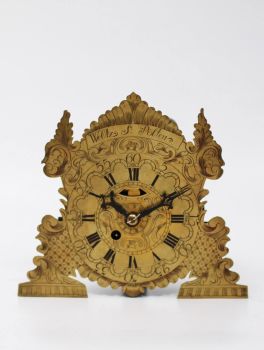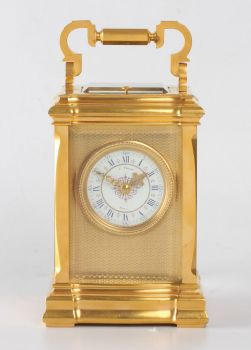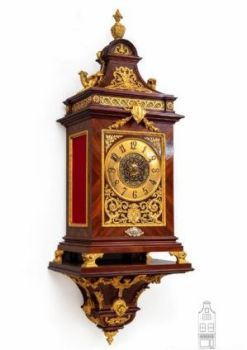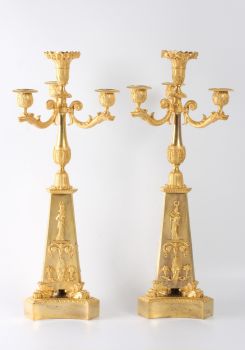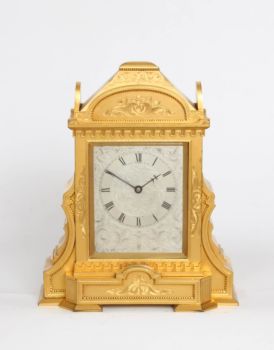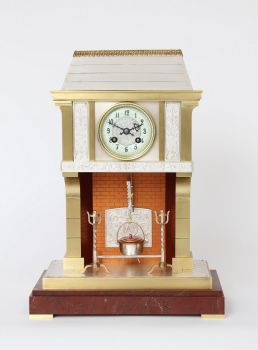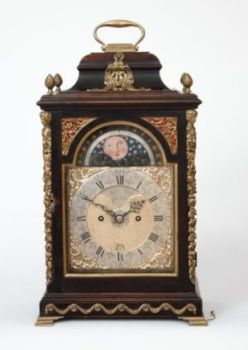Un orologio da parete della Germania meridionale, Luigi XVI, policromo e dorato, circa 1780 1780
Artista Sconosciuto
63.50 ⨯ 12 ⨯ 11 cm
€ 16.000
Gude & Meis Antique clocks and Music Boxes
- A proposito di opere d'arte10.7-cm painted dial with Roman numerals and pierced brass hands, 30-hour movement with verge escapement and front pendulum, driven by its own weight along the rack, parcel gilt bezel and cresting, shaped polychrome and parcel gilt back board.
Most clocks have a movement that has an energy source like a mainspring or a weight to drive the clock. Besides that the movement needs a regulating part that makes sure that the energy is released regularly. Without it the hands would spin around uncontrollably until the spring would have wound down or the weight reaches the floor. The amusing part this clock is that the movement and dial are used as a weight itself. By engaging with the teeth on the ‘rack’ the wheels of the movement can turn. One can simply ‘wind’ the clock by pushing the whole back up the rack. Another amusing part of this clock is the front pendulum. This South German and Alpine tradition is called ‘Kuhschwanz Pendel’ which translates into ‘Cow tail pendulum’. This is not surprising because the pendulum swing like the tail of a cow in front of the dial. Many people are fascinated by the movement slowly descending down the rack while running. A beautiful object that will be a conversation piece for anyone who sees it for the first time. - A proposito di opere artista
Può succedere che un artista o un creatore sia sconosciuto.
Alcune opere non sono determinate da chi sono state realizzate o sono state realizzate da (un gruppo di) artigiani. Esempi sono statue dell'antichità, mobili, specchi o firme non chiare o leggibili ma anche alcune opere non sono affatto firmate.
Inoltre puoi trovare la seguente descrizione:
•"Attribuito a …." A loro avviso probabilmente opera dell'artista, almeno in parte
•“Studio di ….” o “Officina di” A loro avviso un'opera eseguita nello studio o nella bottega dell'artista, eventualmente sotto la sua supervisione
•“Cerchio di…” A loro avviso un'opera del periodo dell'artista che mostra la sua influenza, strettamente legata all'artista ma non necessariamente al suo allievo
•"Stile di..." o "Seguace di..." A loro avviso un'opera eseguita nello stile dell'artista ma non necessariamente da un allievo; può essere contemporaneo o quasi contemporaneo
•“Modalità di…” A loro avviso un'opera nello stile dell'artista ma di epoca successiva
•"Dopo …." A loro avviso una copia (di qualsiasi data) di un'opera dell'artista
•“Firmato…”, “Datato…” o “Iscritto” A loro avviso l'opera è stata firmata/datata/inscritta dall'artista. L'aggiunta di un punto interrogativo indica un elemento di dubbio
•"Con firma....", "Con data...", "Con iscrizione..." o “Riporta firma/data/iscrizione” a loro avviso la firma/data/iscrizione è stata aggiunta da qualcuno diverso dall'artista
Sei interessato ad acquistare questa opera d'arte?
Artwork details
Related artworks
- 1 - 4 / 12
Artista Sconosciuto
Een Gotische zuidelijke Nederlanden wandklok1580 - 1590
Prezzo su richiestaNico van den Assem restauratie
Firm Erhard & Sohne, Schwäbisch Gmünd
Erhard und Söhne – Jugendstil intarsia klok – 1908 / 19091900 - 1909
Prezzo su richiestaAntiques Emporium
1 - 4 / 24- 1 - 4 / 12

